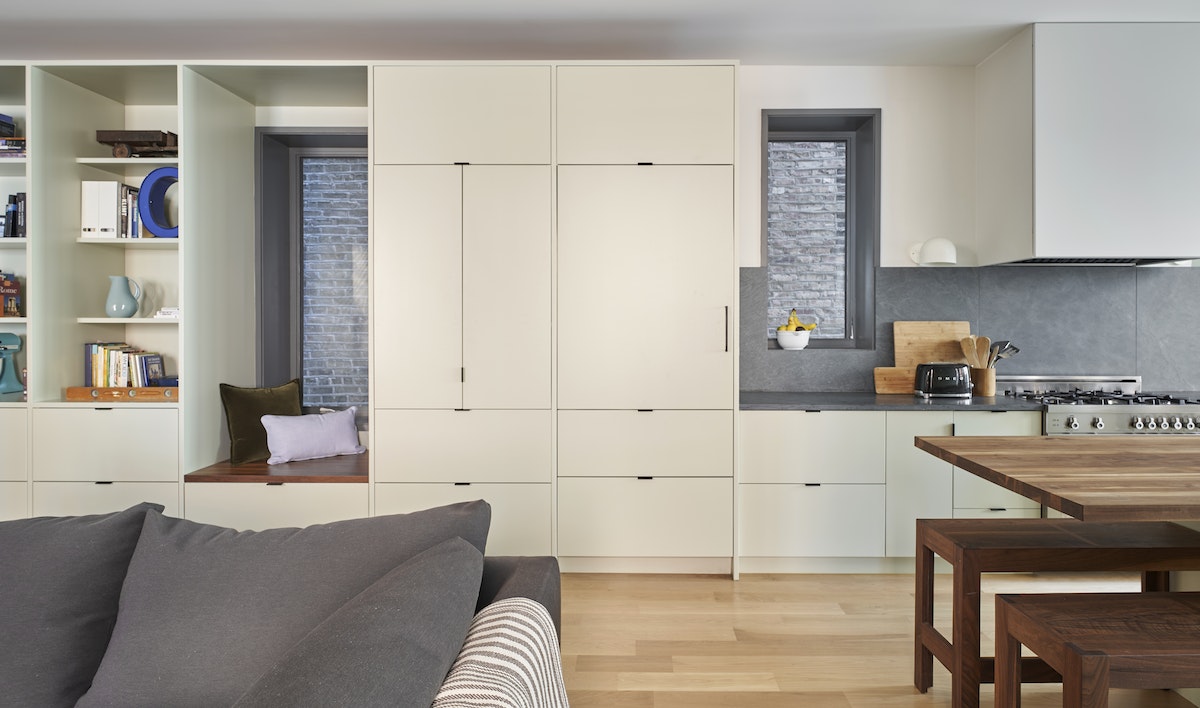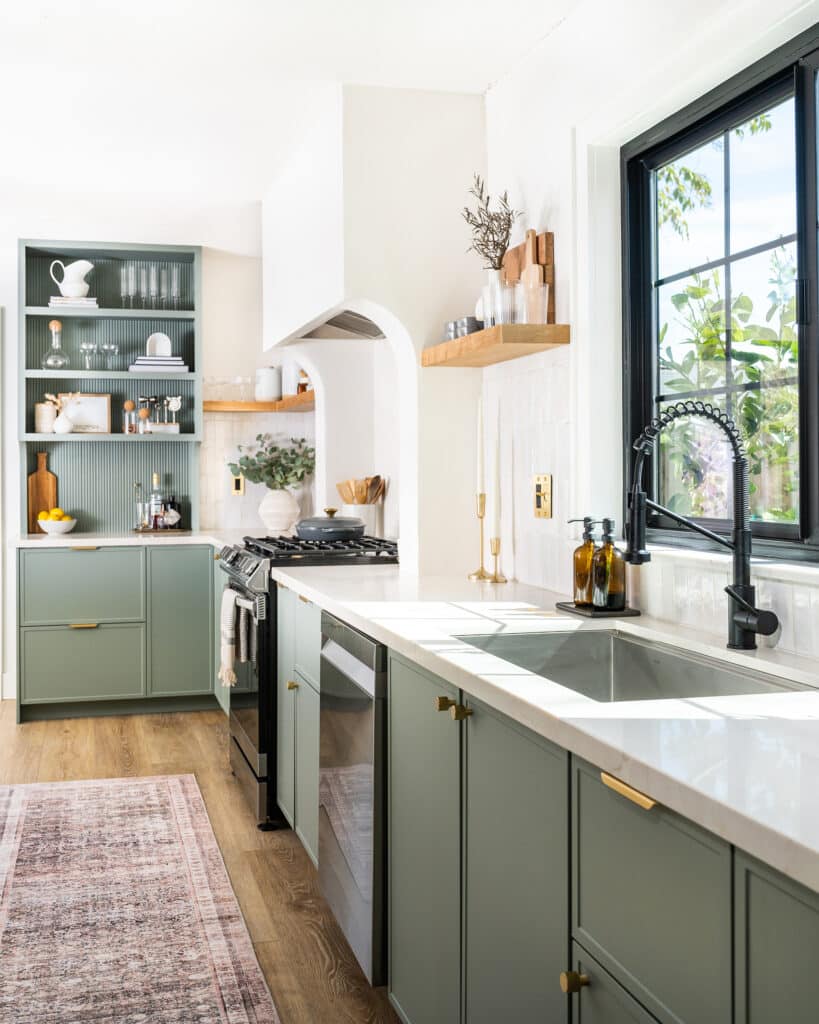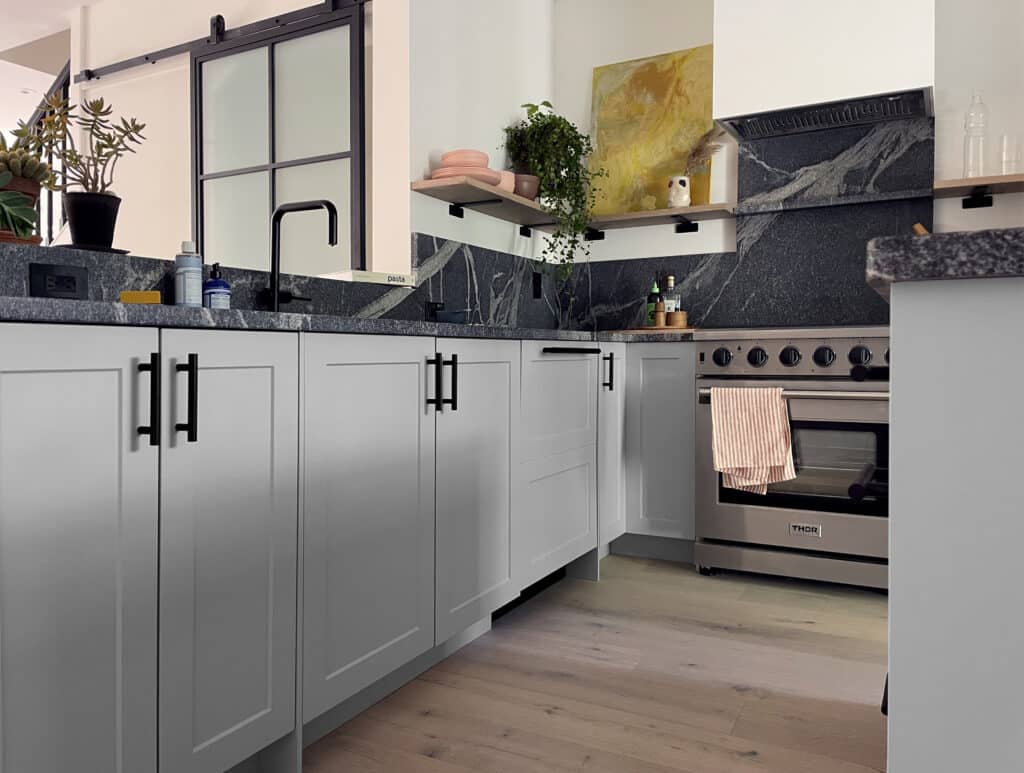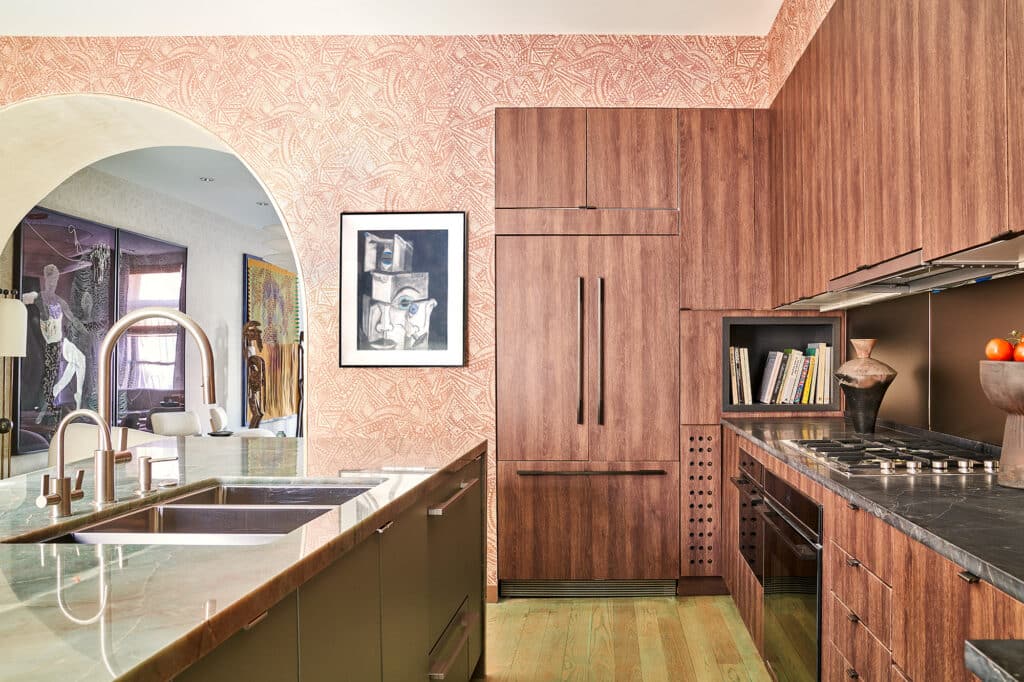How do you take a dilapidated apartment building and transform it into a modern single-family home? Just ask En Masse Design Director Lucas Goldbach. The architect, who was hired to overhaul a shabby Chicago workers cottage, collaborated with designer and homeowner Molly Code to infuse both practicality and style.
The Chicago workers cottage, an architectural style built from the 1870s to 1910s, were affordable housing options for the city’s middle class. Characteristized by a narrow footprint to fit a singular 25’ by 125’ lot and gabled roof, the homes are now being celebrated and preserved.
We sat down with Goldbach to learn how he respectfully renovated the 140-year-old property.
Modest Roots
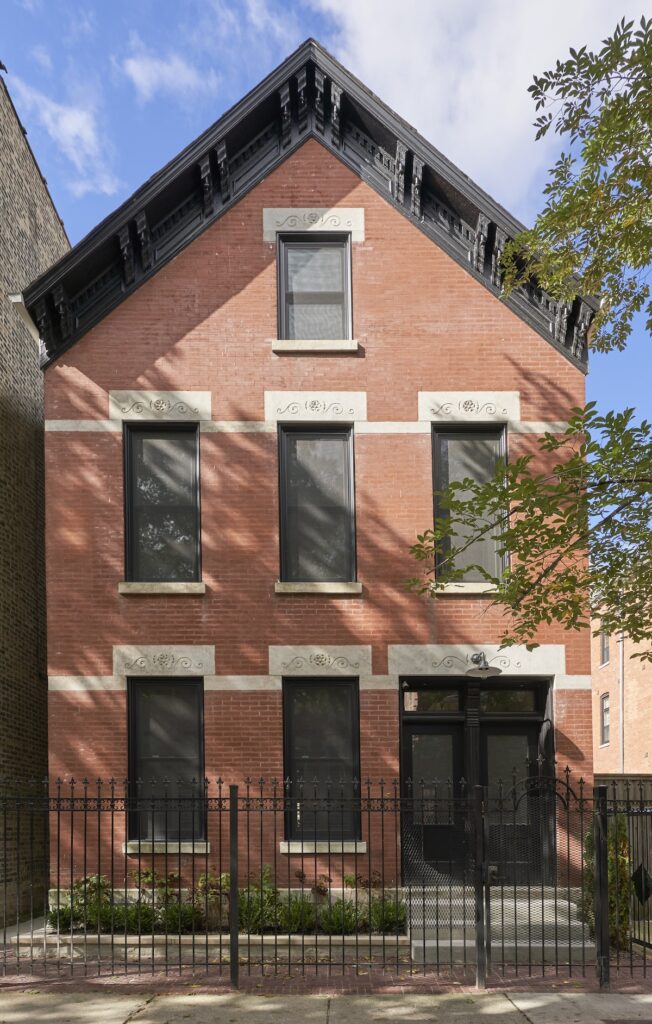
It was in rough shape with funky walls and separations, remarks Goldbach on the Wicker Park home. “When Molly purchased it, it had three separate apartments, one on each floor,” he says. “We helped them through the process of creating a single-family home with a brand new layout.”
The plan was to keep as many original details as possible and “allude to the modest roots of the house, while highlighting historic elements with a fresh eye,” he says. He salavged the entry newel post and painted the trim on the lower floors a graphic gray.
The now four-bedroom, four-bathroom home features some neutrals, but earthy green, a traditional turn-of-the-century tone, that feels both historic and contemporary. “There’s been a long period of using black, white, and gray, and here we tried to use more color,” he adds.
Pick Your Battles
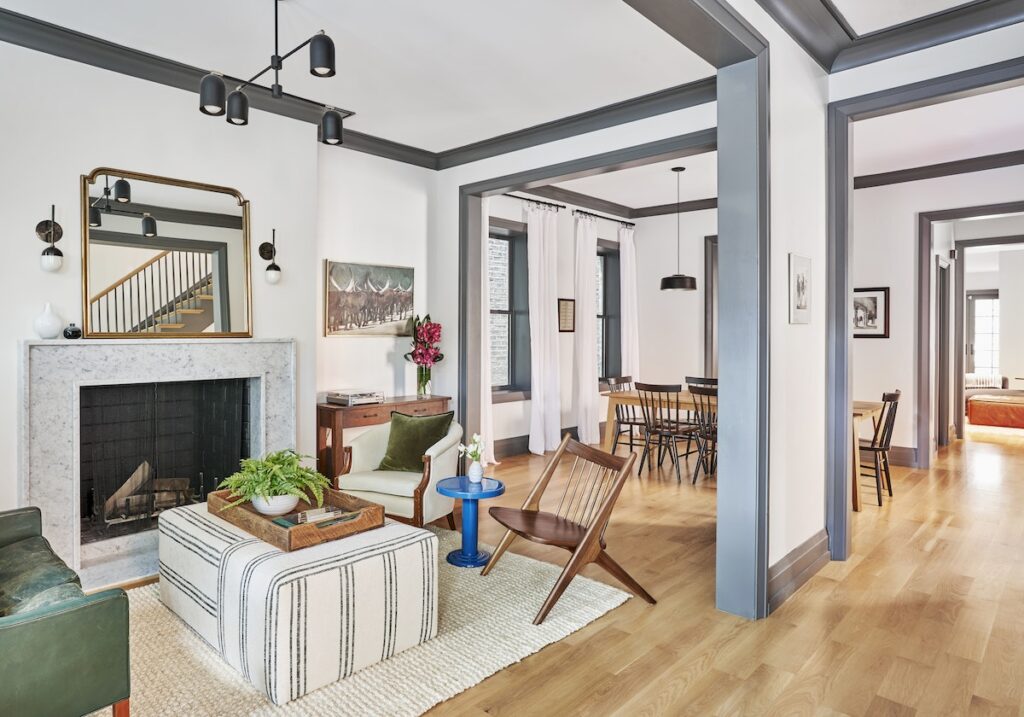
The three-story home required all new HVAC, windows, and everything in between, meaning En Masse needed to find ways to stretch the budget without sacrificing design. To do so, they kept many original window openings to avoid masonry costs, and brought the outside in with a large door connecting the kitchen with the yard. Plus, they kept the exterior in-tact as the home is a landmarked building.
Shifting Priorities
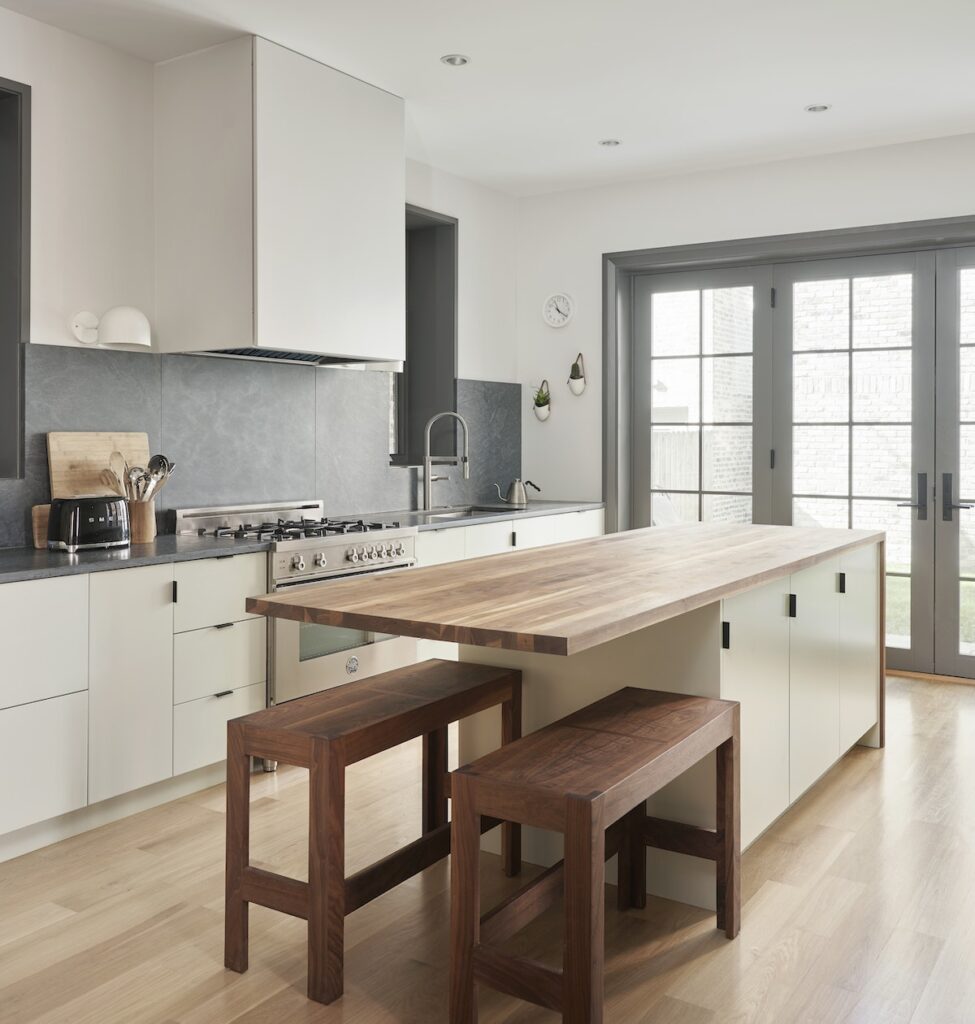
In the case of the first floor, they kept the more traditional rooms up front but added an open kitchen at the rear, keeping a “workers cottage vibe” with slab-style cabinetry in a “slightly green/slightly beige Farrow & Ball shade that kept it from being too sleek” and a custom walnut bench, Goldbach says.
The modern-meets-historical look is completed using Semihandmade’s DIY Slab fronts. “As a firm, we love built-ins and cabinetry as an architectural element,” he says. “The kitchen is really a family room and mudroom space all in one, so we wanted to make it feel like that.”
Kitchen cabinets span to provide added storage, while there’s also a small bar. “Our carpenter installed everything and was able to make sure it all fit together perfectly,” he adds.
Modern Comforts
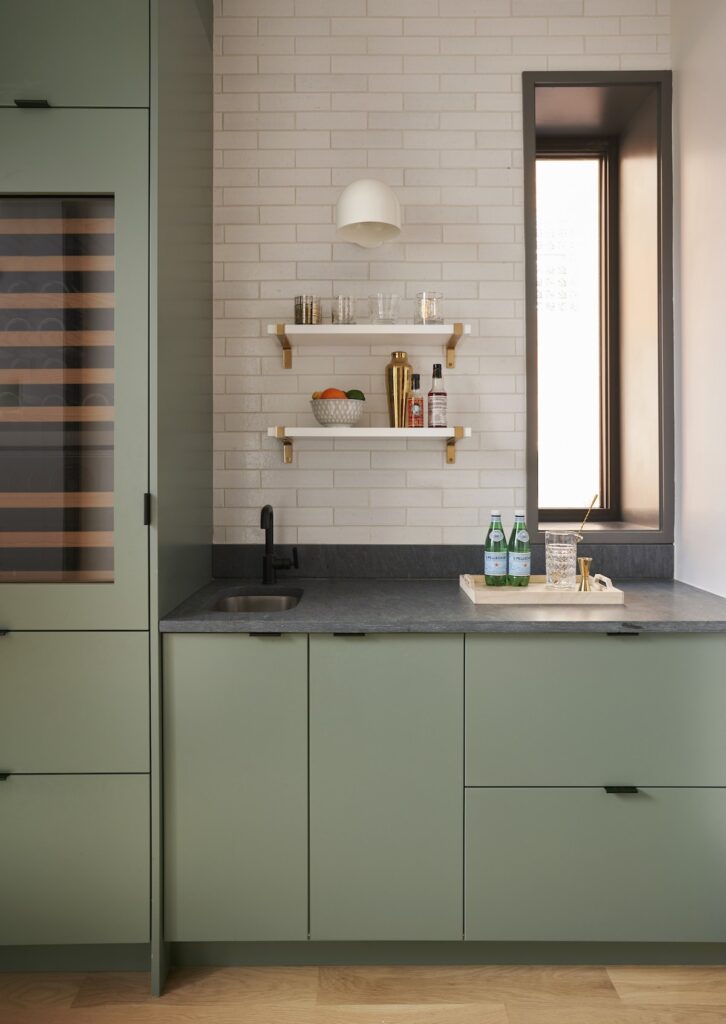
As a full gut remodel, it allowed the home to be brought up to modern standards, be more sustainable, and function better for everyday living. For the homeowners, the integrated bar and mudroom are important elements, while they would not have been typical when it was built. On the upper floors, ensuite bathrooms and walk-in closets were also added. During the two-year design and construction process, En Masse and Studio Code were able to pull off an updated space that pays homage to its history.





